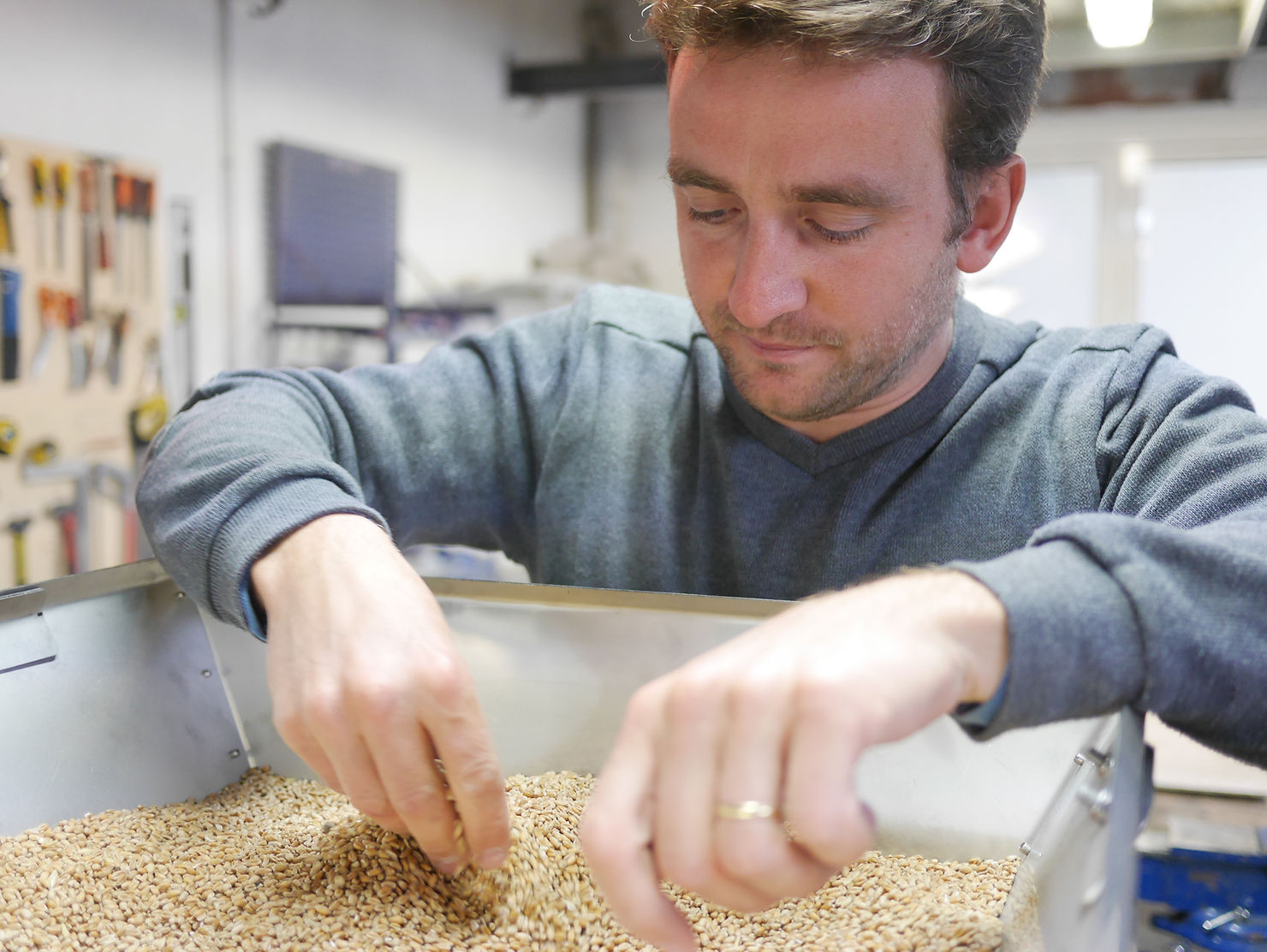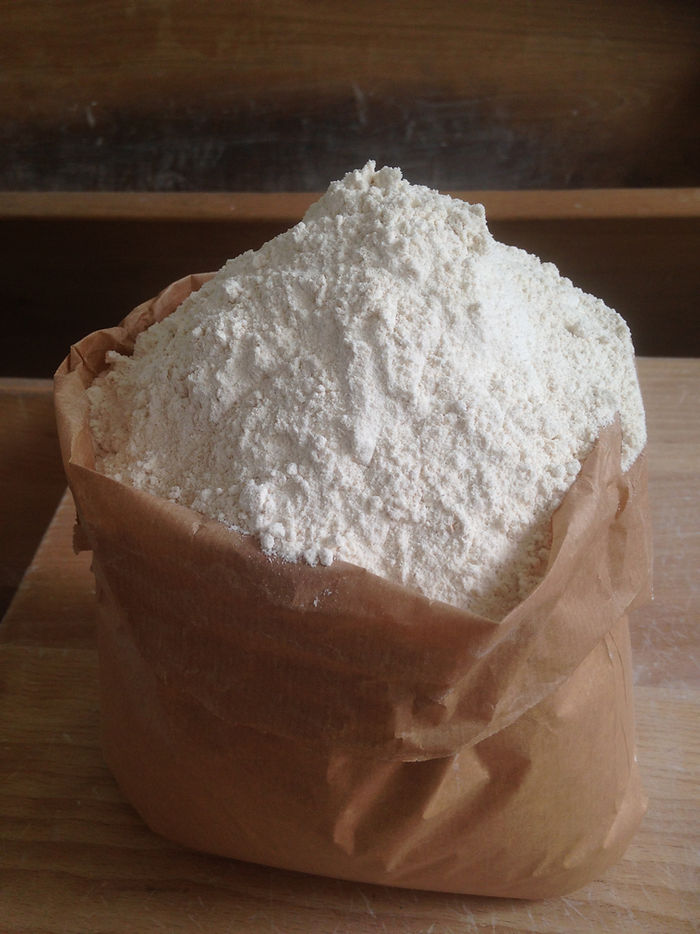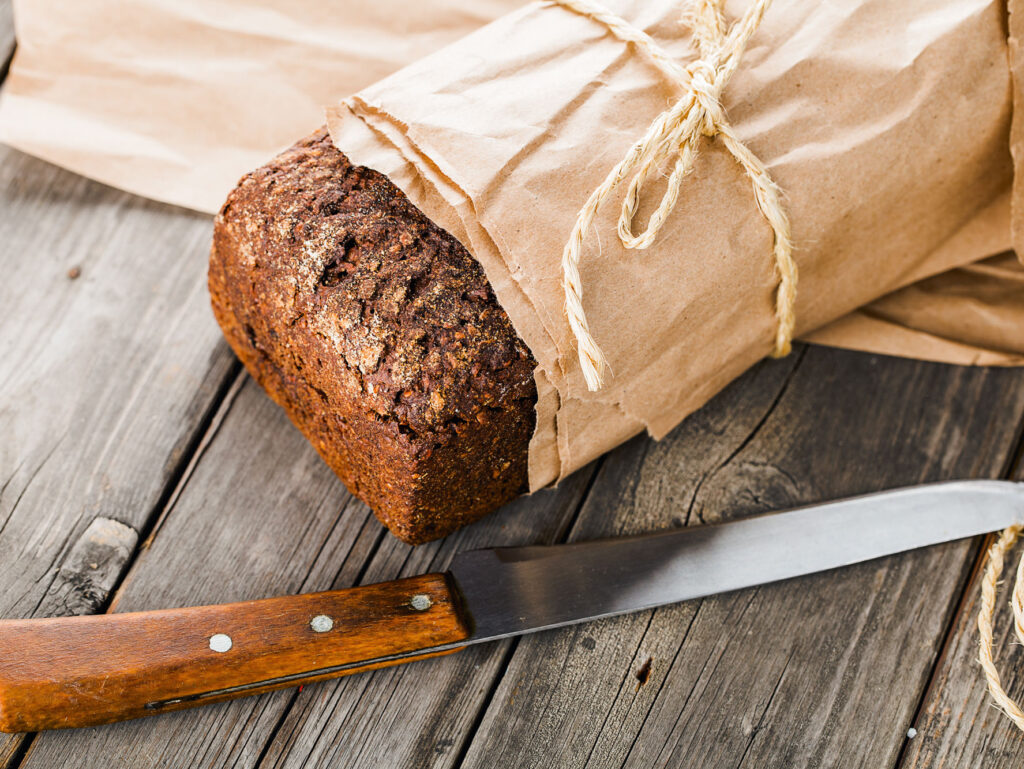What is an Astrié mill?
Few people know that the invention of the Astrié Mill owes its name to the Astrié brothers, who gave their name to this mill.
Unlike cylinder mills and traditional stone mills, the grain is not crushed but actually rolled between the millstones. One of the millstones is in motion, while the other is ‘dormant’.
Here’s a video explaining how the millstones work on an Astrié mill:
Unlike traditional stone mills, it is not the weight of the upper millstone that crushes the seed, but a system of springs and micrometric adjustment between the millstones that ensure the seed is unrolled.
Why ‘unwind the seed’ rather than crush it?
The Astrié mill we manufacture preserves all the nutritional qualities of the grain. You should choose this stone mill if you want to produce flour:
- higher quality
- for an unrivalled taste
- more nutritional
- more natural
- with greater added value
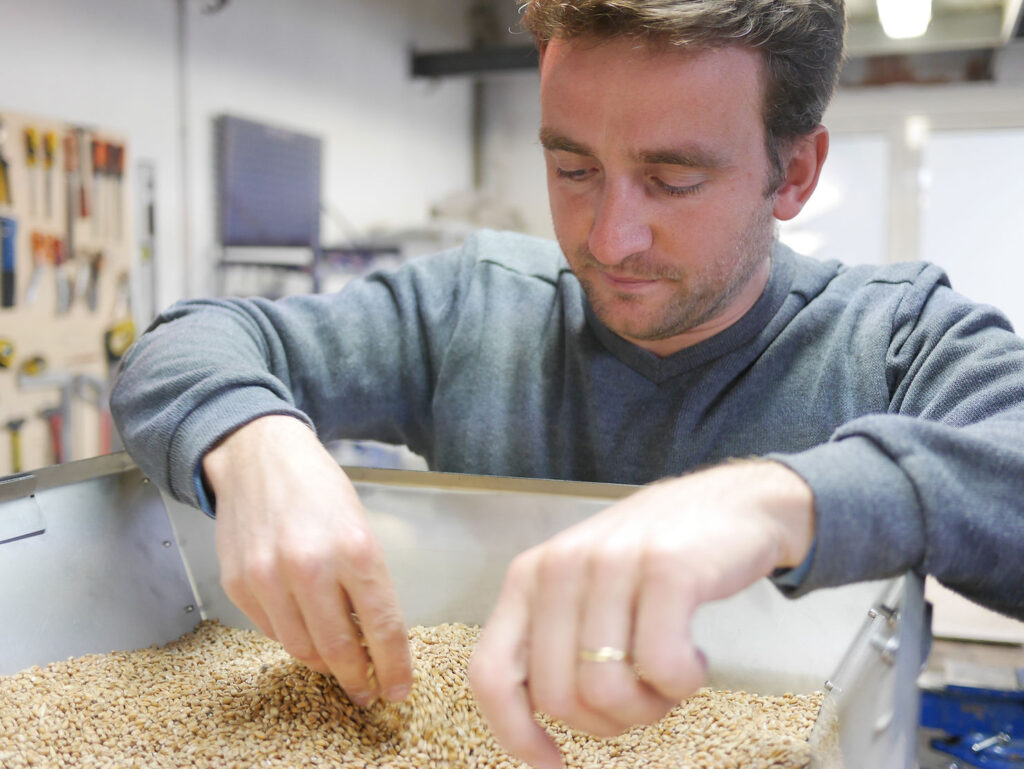
This ‘unrolling’ process ensures that :
- obtain an extraction rate of over 80% in a single pass.
- preserve all the qualities of the seed germ,
Want to find out more? We’ve written an article entitled ‘Why better flour from a stone mill like Moulin Astrié?’.
What makes the Astrié mill different from a traditional stone mill?
The differences include
- the seed is no longer crushed but unrolled
- the flour obtained is more digestible and of higher quality
- the flour has greater added value
- the grain is not heated or oxidised
We’ve written an article on this subject to help you sort things out: ‘Cylinder mill, stone mill, Astrié mill: what are the differences?’
Is it possible to make gluten-free flour with a stone mill?
It’s perfectly possible to make gluten-free flour with our Astréïa stone mill. In fact, we’ve written an article on the subject: ‘How to make gluten-free flour with an Astréïa stone mill’.
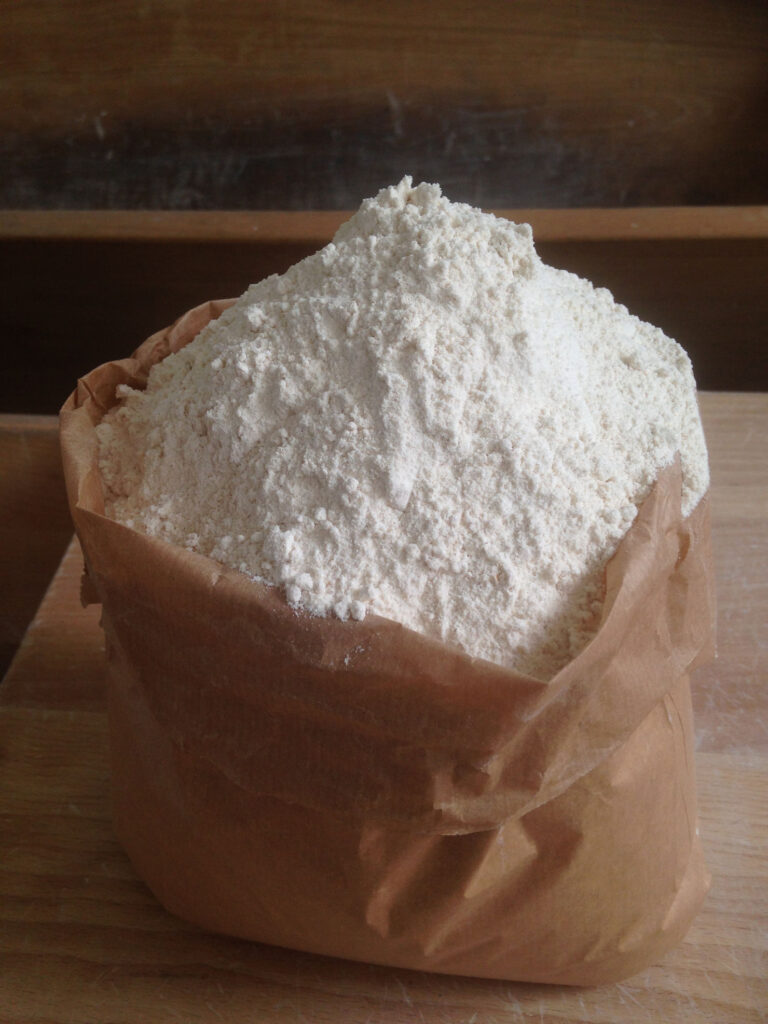
What cereals or grains can be milled with an Astrié mill?
This is a question we are regularly asked. We’ve written an article on the subject to provide a complete overview: ‘What cereals can I unroll in my Astrié Mill?’
Who is Astréïa?
Astréïa is a manufacturer of stone flour mills. We are located in the Ain region (01) and our customers are mostly cereal growers, farmer-bakers and bakers. We tell you the story of Astréïa here.
Looking for an Astrié mill for sale?
We’ve written an article on the subject to guide you in your choice by asking you the most important questions. Article ‘6 questions to ask yourself before buying an Astrié mill’.

